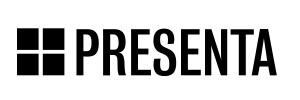Scripting
This document is in progress!
PRESENTA is a service that generates images on-the-fly using a template system and a data-merge mechanism in order to produce image variations at scale.
That’s not all. PRESENTA internal engine is able to run custom code in order to expand variation possibilities by one order of magniture.
Scripting is a powerful capability, for a template, to run custom javascript code performing some logic before render the image.
You can read a couple of article here and here on the topic before diving into the spec details.
TOC
- The rendering flow
- Reading and writing the
queryobject - Fetch external sources
- Using included helper libraries (day.js, number.js, lodash.js)
- Geo and Time parameters
- Hide and show blocks
The rendering flow
It’s important to understand the flow during the rendering process after a PRESENTA URL is fetched:
- The URL parameters are collected into a
queryobject. - Additional properties are injected in the
queryobject, such asgeoandtimeproperties. - If there’s some code in the script panel, the code is executed and the
queryobject is accessible for read/write. - The final
queryobject is then used with the template in order to generate the image buffer.
This means that the script step is able to exploit both the URL and the injected parameters and modify or adding more parameters in the query object.
Reading and writing the query object
The query javascript object is the payload that acts as a bridge from the URL to the rendered image.
Consider this URL:
https://jit.presenta.workers.dev/zGywhb2oJn:z4zi9ZQ5B?name=John&age=20
The above parameters creates this query object:
{
name: 'John',
age: 20
}
that renders the following image:
In the javascript panel you can read it this way:
const {name, age} = query
and you can modify it according to some logic:
const {age} = query
if(age < 18){
query.name = 'Redacted'
}
The property name now will be overridden according to the age value.
This URL will render a different result:
https://jit.presenta.workers.dev/zGywhb2oJn:z4zi9ZQ5B?name=John&age=14
Hide and show blocks
In PRESENTA every block (text, image, svg, qrcade) has a name that is also its ID.
Our Figma importer uses the Figma layer name as Block name in PRESENTA document. They might be different because we performe some cleanup and sanification to remove special characters that might be problematic in our infrastructure.
Another reason why some blocks might have different names is that block names in the same document must be unique, therefore, Figma layers that have the same name will be differentiated a bit.
There are two way to handle such parameter, with URL parameter or using Script.
As URL parameter
All said that to explain that you can programmatically show/hide blocks by using their block name with the following syntax, assuming there’s a block with the name elem1
https://....../aaa:bbb/?title=Some+title&$elem1=hidden
By default all blocks are visible. To hide a specific one, you have to add a URL parameter prepending $ to the name and explicitly set the hidden value, such as $elem1=hidden
As Script
In the Script panel, add the following javascript to hide the same block as above:
query.$elem1 = 'hidden'
Of course, the main difference between URL parameter and Script is that in the latter you have much more freedom to configure the behaviour of the template.
Suppose you have a template with 3 blocks and you want to show only one according to some logic:
const blocksHidden = ['$elem1', '$elem2', '$elem3']
// hide all
blocksHidden.forEach(d => query[d] = 'hidden')
// randomly show only one of these
const idx = parseInt(Math.random()*blocksHidden.length)
const el = blocksHidden[idx]
query[el] = ''
